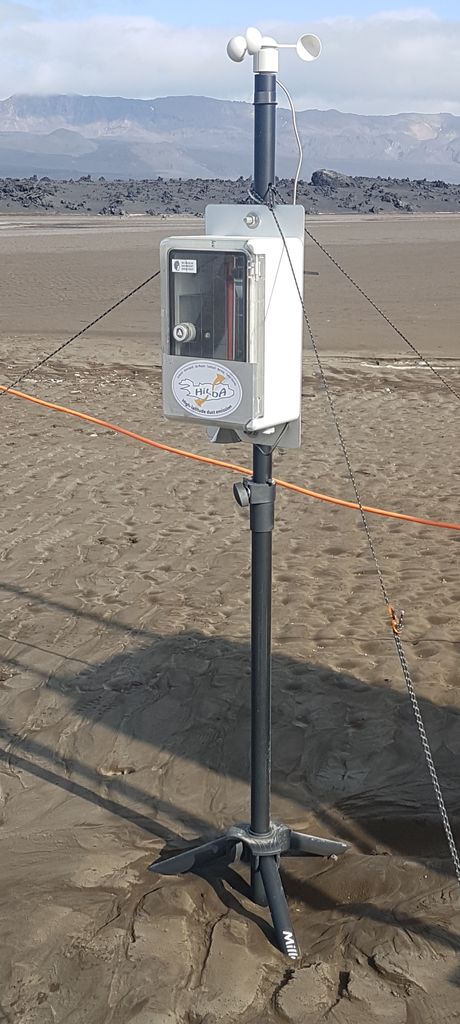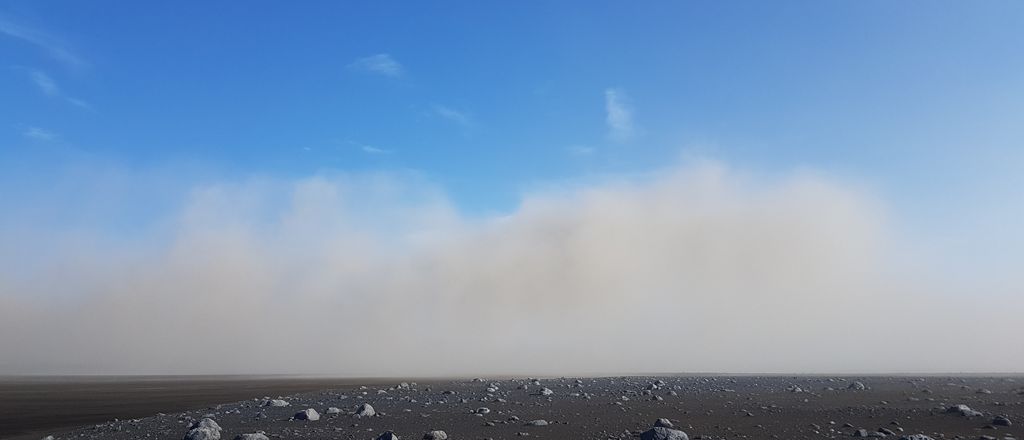
The flooding ‘allows’ us to rethink our strategy – most instruments were carried from the measurement site to a safe storage. Some of them don’t make it back, as in case of the scintillometer, the realignment is too time-consuming. While thinking of the implementation on a new level – literally, as we have been delivered 30 cm of fresh sediment in two flooding days – a new challange creeps over the horizon: Wind.
20 m/s mean winds are predicted for several days. In the first night, we take the risk and leave the setup – our tent and equipment – unchanged, which turns out to be too optimistic. Later, we find readings up to 35 m/s in some of our stations on the mountain tops. Anyway, the tent is ripped, the poles of the wind fence broken – we need to think smaller and therefore reduce the setup to the basic experiment for a day. But as we are scientists and therefore curious, when the worst storms are over day be day another instrument finds its way back to the field site. Partly improvised, as different parts were damaged during the floods and storms.
Of course, also our sleeping tents were subject to to rearrangement – one actually took off for the next mountain (including sleeping bag and mattress), but decided 10 m above ground just to place it self outside the camping area. In view of flying pumice rocks, we decide to sleep behind strong walls – be it a car or a wooden hut.

But why fighting dust? – Well, as soon as the basin dries up, we get what we paid for – dust, more dust, way more dust – too much dust!
At 10,000 µg/m³ PM10, the generators go on strike, and only the battery-run equipment survives. Lucky us, we can draw the ‘Ask Villi’-card, and after only four hours of blackout, we are provided with a working 5 kW generator from Möðrudalur for powering our field site. Yippie!
Our Hondas, having suffered dust and sand for a month now, get a treatment by the mechnic Svavar, but will be on spare from now on.
Another issue arising with the dust – well, except the impossibility to work during the daytime due to the ‘breathtaking experience’ – seems to be electricity. One by one, the digital inputs of our Rasperry Pis controlling our OPCs die away, and fastest in the places with the highest dust load. Luckily, this only affects the wind readings. But nevertheless, Konrad now checks on every service trip, whether the system has to be reprogrammed to a new input. That of course doesn’t make days shorter…

